Spray Foam Insulation vs Traditional Insulation
Spray foam insulation, also known as spray foam or spray polyurethane foam (SPF), is an alternative to traditional insulation.
Although traditional insulation has many benefits, spray foam is versatile and can be used to insulate your roof, loft, walls and floor, helping to prevent heat from escaping and reduce energy costs. It can even increase your property value which we explain below.
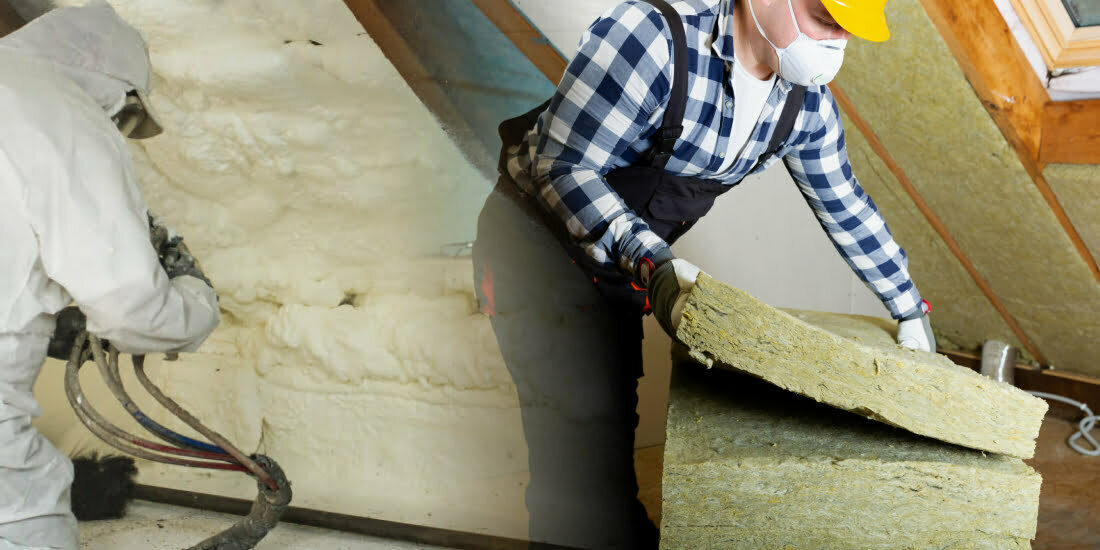
What's On This Page?
Click the links below and head straight to a specific section of the article.
What Is Spray Foam?
This is liquid insulating foam that, when applied, sets to form a thermal barrier. It can be used to insulate several areas of the house such as roof, loft, walls, floors and more.
Having been around for over 30 years, spray foam is becoming increasingly popular as it’s an effective insulator that can also stop air leakage.
It's great for hard to reach areas as well as provide additional sound proofing and has an airtight seal that prevents heat loss but all the benefits are explained below.
There are two types of spray foam insulation: closed cell spray foam and open cell spray foam.
Types of Spray Foam Insulation
Usually both open cell and closed cell spray foam insulations are made from polyurethane and filled with bubbles of gas or air, but have different properties when they are set. If you'd like to learn more about different types of loft insulation, see our article.
We explain both types below.
Closed Cell Spray Foam
Closed cell spray foam sets into a stable solid, which could help support the structure of your property if it’s not in the best condition. However, closed cell spray foam should not be used as a quick fix on structural repairs and should be taken care of properly.
When it sets, it contains lots of pockets of gas which slow down the movement of heat passing through it.
But it also acts as a barrier to moisture, so you’ll need to make sure the area has plenty of ventilation. Otherwise condensation could build up.
Open Cell Spray Foam
Open cell spray is less dense once set so you’ll need to install a thicker layer to get the same level of insulation as closed cell.
Open cell spray foam is often used for soundproofing as it blocks and reduces airflow. It allows moisture through it so there’s less risk of condensation building up.
Pros and Cons of Spray Foam
Spray foam insulation offers a range of benefits such as:
Pros
It can be applied in hard to reach areas
It can provide additional sound proofing
Airtight seal prevents heat loss
Seasonal energy bills are decreased
Home energy efficiency is increased
Ideal for lofts, roofs, walls and floors
Air leakage is virtually eliminated
Cons
It needs to be installed by a professional
It can be difficult to remove once it's been installed
Harmful fumes are given off during installation
Not to be used in listed buildings or houses with thatched roofs
How Much Does Spray Foam Insulation Cost?
There are many factors that might determine how much you pay to have spray foam insulation installed in your home or business premises. These include how much spray foam insulation you need, which parts of your building need to be sprayed, how big your property is, how long the job will take and so on. The thickness of your spray foam insulation may also affect the cost, as can the type of spray foam insulation you opt for. The two main kinds of spray foam insulation available to you are open cell and closed cell.
Can Spray Foam Insulation Add Value To Your Home?
There’s a big chance spray foam insulation could increase the value
of your home. This is because homes with good insulation tend to be more
in-demand. Over half of all property purchasers now consider
energy-efficient as important when they’re looking for a new home or
business premises.
If you don’t have any insulation, or if your home is poorly-insulated, you could be paying much more for your fuel bills than you need to. It’s said that uninsulated homes lose around 40% of heat during the winter months. This causes your HVAC systems to work harder, which in turn leads to a rise in energy bills.
How Much Can Spray Foam Insulation Reduce My Energy Bills?
Spray foam insulation could help cut your energy bills by approximately £45 each month, a figure that equates to over £500 each year. Although the price that you initially pay for spray foam insulation may seem large to some, you start to get your money back over time thanks to the way the insulation can help you reduce your energy bills. Spray foam insulation can last for more than 20 years, so you can expect to see a good return on investment.
Traditional Insulation Types
To get an idea on traditional insulation types and how they compare against spray foam insulation, we’ve listed them out below:
Fibreglass Insulation
Cellulose Insulation
Celotex Insulation
Rockwool Insulation
Fibreglass Insulation
Fibreglass is one of the cheapest insulation methods, whilst providing similar qualities to some of the pricier alternatives.
It comes in two options, blankets and loose fill and this insulation has been popular in the homes around the UK.
Pros of Fibreglass Insulation
Fibreglass is a cheaper insulation choice
It doesn’t shrink
It's environmentally friendly, using recycled glass
It has a U-value of 0.3
Cons of Fibreglass Insulation
Fibreglass blankets struggle to cover all gaps
Fibreglass contain harmful glass particles that can cause irritation
Cellulose Insulation
Cellulose insulation consists of cellulose cells that have natural insulating power. It is made of shredded paper and a chemical known as a borate. The paper is broken down into cellular fibres which then provide insulation.
This insulation is installed in your loft using an insulation blower and sprayed into your loft space.
Pros of Cellulose Insulation:
Cellulose is environmentally friendly
It is more efficient than Fibreglass
Cons of Cellulose Insulation:
Cellulose insulation can be very messy when applied
It requires a lot of space for installation
Cellulose insulation often has issues with moisture
Celotex Insulation
Celotex is a hard insulation product made by gluing the laminated aluminium foil facings together.
The insulation boards have improved thermal performance compared to other traditional insulation products making them a desirable form of insulation.
The product is lightweight and easy to apply.
Pros of Celotex Insulation:
Celotex has a good thermal performance
They don’t absorb water
Celotex doesn’t absorb moisture or sag
Cons of Celotex Insulation:
Celotex doesn’t fill in all the gaps
It isn’t airtight
Possibility of it falling out
Not very flexible
Rockwool Insulation
Rockwool insulation, also known as mineral wool, comes in easy to install batts similar to fibreglass. Rockwool is composed of rocks that are heated until they melt into a liquid and exposed to high pressure and then spun into long fibre strands at high speed.
Pros of Rockwool Insulation
Rockwool is fire resistant
It has excellent thermal insulating properties
Rockwool is breathable
Cons of Rockwool Insulation
Rockwool can cause skin irritation and respiratory problems if breathed in
Possibility of it starting to sink and sag over the years
Will not dry easily if it becomes damp or wet
Summary
Hopefully this guide has now given you an in depth look into both spray foam and traditional insulation. Although traditional can help in a many ways, spray foam insulation can often be the better alternative and has a wide range of benefits:
Spray foam insulation can be applied in hard to reach areas
It can provide additional sound proofing
Airtight seal prevents heat loss
Seasonal energy bills are decreased
Home energy efficiency is increased
Ideal for lofts, roofs, walls and floors
Air leakage is virtually eliminated
As you can see, spray foam insulation has so many things going for it. If you would like to invest in spray foam and would like to talk to a professional, just enter a few details and we will take care of the rest.
Related articles
View all Insulation articles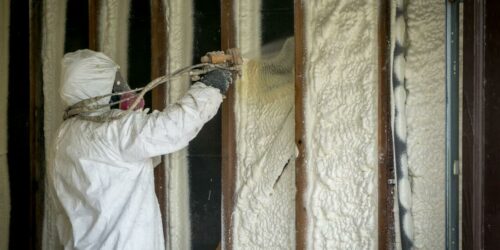
How Long Does Spray Foam Insulation Last?
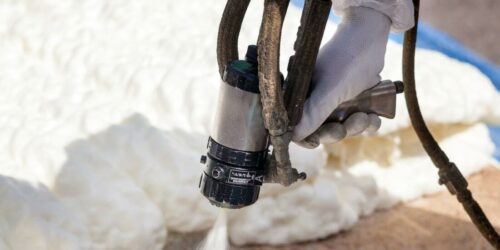
Can I Install DIY Spray Foam Insulation Myself?
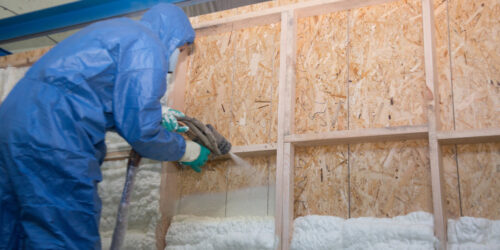
Six Benefits of Spray Foam Insulation
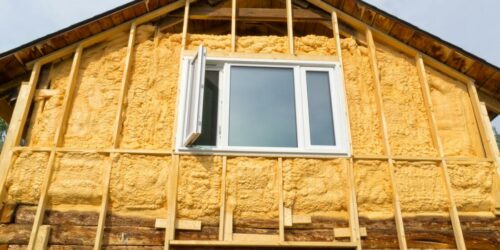
Is My Property Suitable for Spray-On Insulation Foam?

Why Consider Spray Foam Insulation in Roofs?
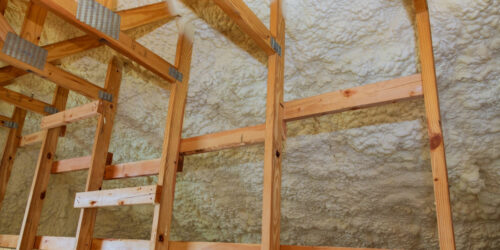
Icynene Spray Foam Insulation: A Complete Guide
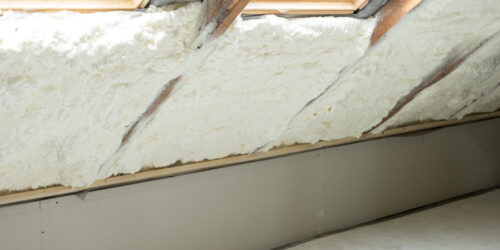
Spray Foam Insulation Installers: What to Expect







